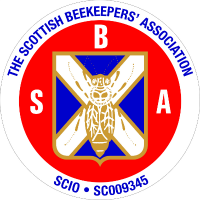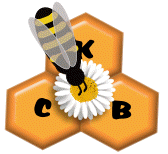BeeBase is the Animal and Plant Health Agency’s (APHA) National Bee Unit website. It is designed for beekeepers and supports Defra, Welsh Government and Scotland’s Bee Health Programmes. BeeBase supports the aims of the Healthy Bees Plan 2030, which focuses on protecting and sustaining our valuable national bee stocks.
The website provides a wide range of apicultural information for beekeepers, to help keep their colonies healthy and productive. It provides a wide range of beekeeping information, such as the activities of the NBU, honey bee related legislation, pests and diseases information which includes their recognition and control, publications, advisory leaflets and key contacts.
Click here for Beekeeping in Scotland information.
Click here for Maps showing various information in Layers.
Please play your part and help them by signing up to BeeBase here.

The Scottish Beekeepers Association
“Our purpose is to support honey bees and beekeepers in Scotland”
Please use this link for more information
Varroa

image copyright: © Crown copyright
Varroa destructor, previously described as Varroa jacobsoni, is a parasitic mite of honey bee brood. In the past century, it has become the most serious pest of European honey bees across the globe. When populations overwhelm a colony, it leads to a disease called parasitic mite syndrome and, if left untreated, an infested colony will usually die within 2 to 3 years.
European Foulbrood

image copyright: © Crown copyright
European Foulbrood is caused by the bacterium Melissococcus plutonius. Larvae become infected by consuming contaminated food fed by the nurse bees. The bacteria multiply within the larval gut, competing with it for food. They remain in the gut and do not invade larval tissue; larvae that die from the disease do so because they have been starved of food. This normally occurs shortly before the cells are capped.
Any suspicion of this notifiable disease should be reported to the Scottish bee inspectors by emailing: Bees_Mailbox@gov.scot
American Foulbrood

image copyright: © Crown copyright
American Foulbrood is caused by a spore forming bacterium called Paenibacillus larvae. These spores are the infective stage of the disease and infection begins when food contaminated with spores are fed to larvae by the nurse bees. Once in the gut of the larva the spores germinate, bacteria move into the larval tissues, where they multiply quickly. Infected larvae normally die after the cell is sealed and millions of infective spores form in the larval remains. P. larvae spores remain viable for many years and are very resistant to extremes of temperature and to many disinfectants.
Any suspicion of this notifiable disease should be reported to the Scottish bee inspectors by emailing: Bees_Mailbox@gov.scot
Sacbrood

image copyright: © Crown copyright
Sacbrood virus (SBV) is a common and widespread virus across the world, and it is found throughout the UK. This virus is so common that it is likely that most beekeepers will encounter it at some point. In the UK, SBV was one of the three most common diseases found (chalkbrood and parasitic mite syndrome being the other two) during inspections performed by the NBU between 2006 and 2016. In most diseased colonies, relatively few larvae are visibly affected, and it rarely causes measurable harm.
For more information click here.
Chalkbrood

image copyright: © Crown copyright
Chalkbrood is a caused by a fungus called Ascosphaera apis. The fungus grows best at temperatures slightly below optimal brood rearing, which is why chalkbrood is often associated with chilled brood. Chalkbrood is fatal to infected larvae and can result in a decline in bee numbers and honey production, but it does not typically cause the demise of a colony.
For more information click here.
Asian Hornet (Vespa Velutina)

Please visit these websites for detailed information:
GB Non-Native Species Secretariat:
www.nonnativespecies.org
Beebase Information:
https://www.nationalbeeunit.com/diseases-and-pests/asian-hornet
To help distinguish between the many Vespa species, the French Museum of Natural History has produced an Identification Information Sheet.
Small Hive Beetle - SHB (Aethina tumida)


image copyright: © Crown copyright
The Small Hive Beetle (SHB), Aethina tumida, is an invasive species originating from Africa which has proved to be a serious pest of honeybee hives in the USA and Australia. The SHB has been made notifiable within England and Wales by the Bee Diseases and Pests Control Order 2006 and the Bee Diseases and Pests Control (Wales) Order 2006.
BeeBase Information:
https://www.nationalbeeunit.com/diseases-and-pests/exotic-pests/small-hive-beetle
Veterinary Medicines and Bees

It is the responsibility of the VMD to authorise and regulate the market for all veterinary medicines in the UK. These medicinal products are safe, when used according to their authorised conditions of use (their marketing authorisation). However, it is important that the manufacturer’s instructions are followed to ensure that there are no detrimental effects to the colony, the beekeeper, and food safety. All authorised products have undergone a thorough scientific assessment of data to show that they meet statutory levels of quality, efficacy and safety to the user, bees, consumers of bee products and the environment.
A list of the products currently authorised for use in bees can be found on the VMD’s Product Information Database. To find veterinary medicines relating to bees, filter ‘Honey Bees’ in the ‘Species’ section and click ‘Run Search’ at the bottom of the page. Each authorised product will have a link to their Summary of Product Characteristics (SPC), explicitly laying out the authorised conditions of its use. Click Here for NBU Information
You are required to keep a record of the veterinary medicines you use on your bees for 5 years! Download the pdf below: Medicine Record Card – Click Here


